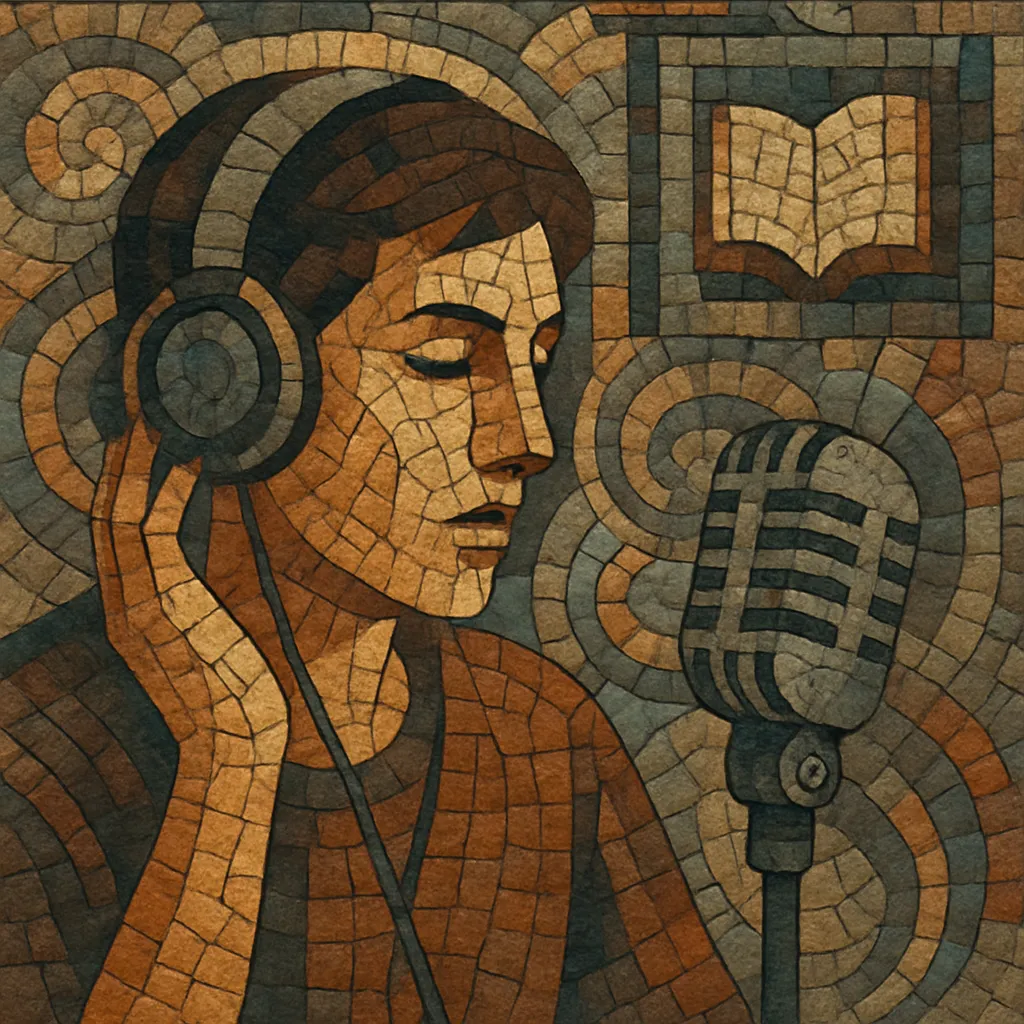Audio drama is a scripted, performed storytelling medium that relies entirely on dialogue, narration, music, and sound design to convey plot, character, and setting.
Unlike audiobooks, which typically feature a single narrator reading prose, audio drama is fully dramatized with a cast of actors, foley effects, atmospheres, and a composed or curated score. It spans genres from mystery and noir to science fiction, horror, and comedy, and is distributed via broadcast radio and, more recently, digital podcast platforms.
The craft emphasizes spatial and psychological immersion through sonic cues, pacing, and vocal performance, allowing listeners to visualize scenes without visuals—often called “theatre of the mind.”
Radio networks in the United Kingdom and the United States began broadcasting scripted dramas in the early 1920s as radio ownership spread. The BBC quickly explored narrative techniques suited to sound-only storytelling, establishing conventions of voice placement, live foley, and musical cues that defined the medium.
Audio drama reached mass popularity during the interwar and wartime years, when serials, anthologies, and live broadcasts became cultural events. In the U.S., programs like Mercury Theatre on the Air demonstrated the power of realism and sound design (famously with the 1938 War of the Worlds broadcast). Across the Atlantic, the BBC developed a thriving drama department and refined production standards that influenced global practice.
Television’s rise reduced prime-time radio drama in many markets, but the form persisted on public broadcasters (notably the BBC and various European services) and on specialty strands and syndication. Innovators experimented with radiophonic techniques, multi-track tape, and documentary-dramatic hybrids, keeping the craft vibrant even as mainstream attention waned.
Public radio, independent studios, and producers revitalized the format with new serials and high-fidelity productions. Landmark works included science fiction and comedy series, as well as experimental sound collages that blended musique concrète with narrative. Companies such as ZBS Foundation and later Big Finish advanced cinematic approaches to sound design and franchise storytelling.
With the rise of digital audio and podcasting, audio drama experienced a global resurgence. Independent creators and studios leveraged on-demand distribution to reach large audiences with horror, sci‑fi, thriller, and prestige dramas. High-production series embraced binaural recording, film-style scoring, and sophisticated sound design, while maintaining the form’s core strengths: character-driven scripts, evocative atmospheres, and narrative pacing optimized for listening.
Start with a concept that benefits from sound-only storytelling. Write a script in audio-centric format: concise scene headings (for internal workflow), dialogue that conveys action and subtext, and lean narration to bridge time and space. Replace visual beats with sonic actions and reactions.
Cast voices with distinct timbres and ranges so characters remain identifiable without visuals. Coach actors for mic technique (proximity, plosives, dynamics) and for clear emotional arcs. Use overlapping dialogue, breaths, and pauses as rhythmic tools.
Design environments with layered ambiences (room tone, weather, crowd) to establish place. Use foley for physicality (footsteps, cloth, props) and spot effects for plot beats. Employ spatialization (stereo imaging or binaural) to indicate distance, movement, and point of view.
Compose or license themes, stingers, and beds that reinforce tone and pacing. Assign leitmotifs to characters or ideas, and time musical transitions to scene changes or revelations. Keep music frequencies complementary to dialogue to avoid masking.
Record in a quiet, treated space with close miking (e.g., cardioid condensers) and pop filters. Capture wild tracks for ambiences and foley. Maintain consistent gain staging, and record room tone for seamless edits. Consider simultaneous multi-mic recording for ensemble scenes.
Edit for clarity and momentum; trim redundancy and tighten pauses. Balance dialogue first, then layer SFX and music. Use EQ to carve space (de‑ess vocals, notch rumble), compression for intelligibility, and reverb/delay to place voices in environments. Limit final peaks and master to consistent loudness targets (e.g., −16 LUFS stereo for podcasts).
Spot-test on consumer devices (earbuds, car speakers) to ensure intelligibility. Create show notes and transcripts for accessibility. Iterate based on listener feedback and, if serialized, plan arc payoffs and cliffhangers that suit episodic release.


